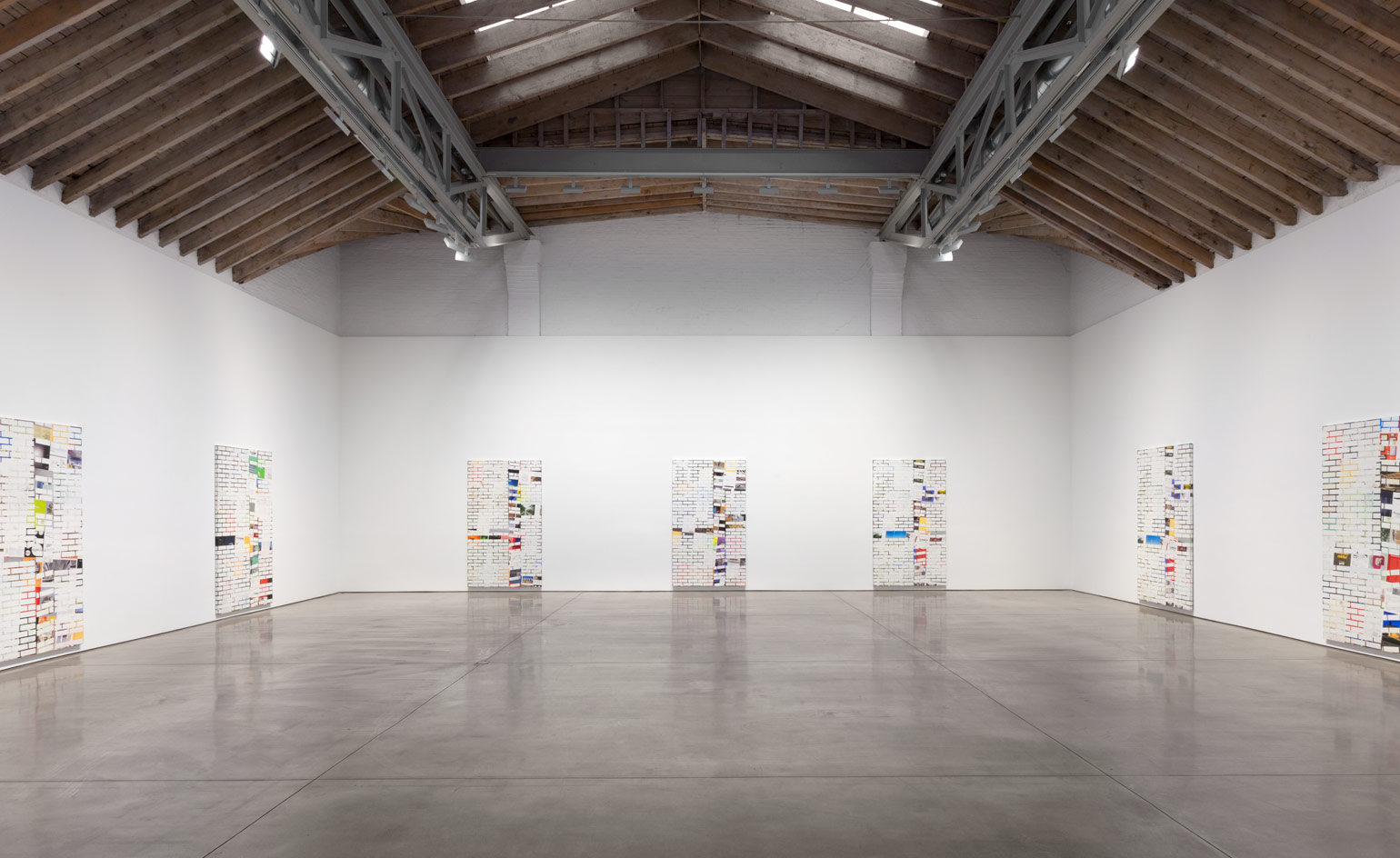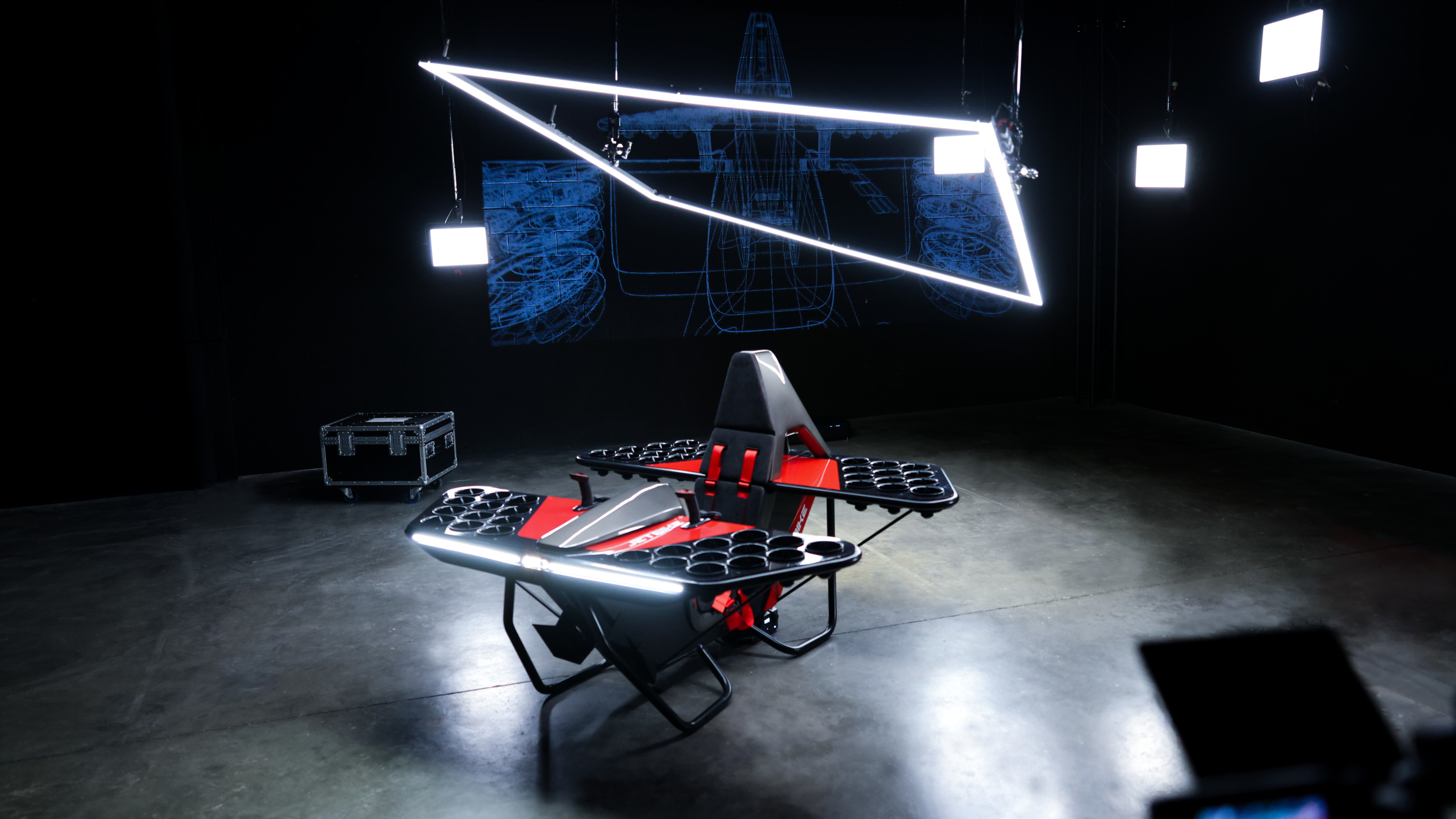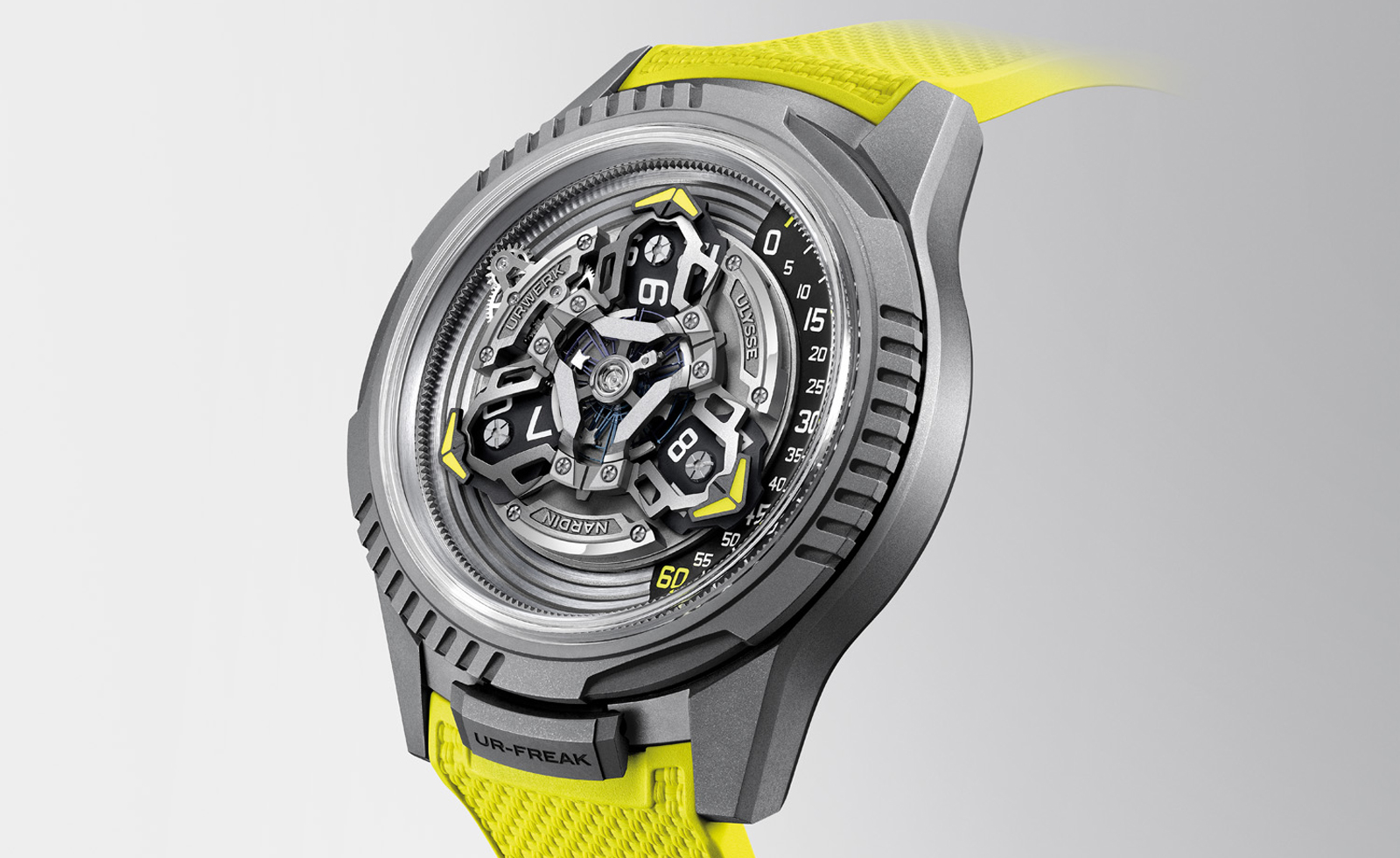Kelley Walker tears down convention brick by brick

'It is difficult to generate originality in such a synthetic world,' noted David Chipperfield in the July/August 2012 issue of Domus. The architect’s observation is present in more ways than one in an exhibition of new work by artist Kelley Walker. The dozen paintings on show at Paula Cooper Gallery erect walls of silkscreened bricks atop canvases wrapped in pages of a year’s worth of the Gio Ponti-founded design magazine, building shifting, blurring layers of the digital and the analog, the structural and the decorative, the humble and the slick.
'These are the shape of my studio windows,' says Walker, who lives and work in New York City. 'So on one level you’re seeing the depth of actual architectural space and yet you’re also seeing this confused, digitally displaced logic—the way the bricks sputter and spit, they feel like static and at the same time signs or letters.'
The identically sized works each interrupt an orderly grid of bruised white bricks with a horizontal gap that intersects a vertical band in which the bricks become irregular, tilting in Morse code-like bursts at angles aligned precisely with the off-kilter underlayer of collaged magazine pages. The result is a colorful cruciform structure that animates each 2.5-meter tall canvas. 'So the wooden stretcher bar itself is incorporated,' notes Walker, 'mocked by the cross but also referenced in new form with the paper.'
Reading between the lines, one can scrutinize fragments of Domus, one 2012 issue per painting. From beneath the hand-cut bricks emerge sleek chairs and light fixtures, ads for the Salone del Mobile, phrases like 'artificial topography' and 'Silicon Roundabout,' an image of the deserted Baghdad Zoo, a quote bemoaning the practical applications of architectural 'theory' in Italy.
'This is Domus for one year, so it’s like seeing a year of color,' says Walker. 'I don’t know what it’s going to look like in twenty years.' The four-color printing process known as CMYK unites the magazine pages and the bricks, which Walker has been working with since 2005. He purchases the bricks online, a hundred at a time, and upon arrival, places them one by one atop the scarred glass bed of his studio scanner. The individual images are stacked and then silk-screened.
'Magazines are also created using CMYK, but the bricks are hand-printed, so they’re always wildly free-form,' he says. 'There’s two of us pulling [ink through the screen], and we pull on different days, at different times, different moments, different pressure, so the body is present in these, just as it is in architecture.'
Occupying the space of painting while making use of various means of reproduction, these canvases, with their wrapped edges, gridded surfaces, and picture-window scale, meet Chipperfield’s challenge. They are a genre onto themselves, incorporating personal choices and architectural dimensions to initiate a shift in perception. 'They point to this frustrating period that we’re in,' says Walker, 'trapped somewhere between analog and digital.'

A dozen paitings of silkscreened bricks atop canvases wrapped in pages of a year’s worth of design magazine Domus hang at the New York art gallery. Photography: Steven Probert, courtesy of artist and Paula Cooper Gallery

'Untitled' (2013) Photography: Steven Probert, courtesy of artist and Paula Cooper Gallery

Made in the shape of Walker's studio windows, the paintings are meant to reflect the depth of actual architectural space as well as this confused, digitally displaced logic. Photography: Steven Probert, courtesy of artist and Paula Cooper Gallery

The magazine pages and the bricks are combined using the four-color printing process known as CMYK. Photography: Steven Probert, courtesy of artist and Paula Cooper Gallery
ADDRESS
534 West 21st Street, New York, New York, 10011
Receive our daily digest of inspiration, escapism and design stories from around the world direct to your inbox.
Stephanie Murg is a writer and editor based in New York who has contributed to Wallpaper* since 2011. She is the co-author of Pradasphere (Abrams Books), and her writing about art, architecture, and other forms of material culture has also appeared in publications such as Flash Art, ARTnews, Vogue Italia, Smithsonian, Metropolis, and The Architect’s Newspaper. A graduate of Harvard, Stephanie has lectured on the history of art and design at institutions including New York’s School of Visual Arts and the Institute of Contemporary Art in Boston.
-
 From jet bikes to electric speedsters, the CES debuts that might just fly
From jet bikes to electric speedsters, the CES debuts that might just flyCES 2026 brought new releases in the world of mobility tech, including a host of automotive AI innovations. We’ve rounded up the show's key debuts
-
 Wallpaper* Design Awards: A ‘no-hands’ watch is the Best Time Warp of 2026
Wallpaper* Design Awards: A ‘no-hands’ watch is the Best Time Warp of 2026The Ur-Freak watch by Ulysse Nardin and Urwerk reimagines a 2001 timepiece and wins a Wallpaper* Design Award
-
 Issey Miyake’s colourful collaboration with Asics is making an early claim for sneaker of the year
Issey Miyake’s colourful collaboration with Asics is making an early claim for sneaker of the year‘Issey Miyake Foot’ is the name of a new, ongoing project between Miyake Design Studio and Asics. First up? The ‘Hyper Taping’ sneaker, which launches later this month
-
 Out of office: what the Wallpaper* editors have been up to this week
Out of office: what the Wallpaper* editors have been up to this weekThe Wallpaper* team enjoyed good art, food and drink this week, attending various exhibition openings and unearthing some of the best pasta and cocktails that London has to offer
-
 Architectural photographer Dennis Gilbert (1951-2021): an appreciation
Architectural photographer Dennis Gilbert (1951-2021): an appreciationArchitectural photographer Dennis Gilbert has died aged 70. Founder of View Pictures, one of the foremost agencies for architectural imagery, and an honorary fellow of RIBA, he helped shape our perception of contemporary architecture
-
 Bulgari and David Chipperfield unite for Rome’s Torlonia Marbles exhibition
Bulgari and David Chipperfield unite for Rome’s Torlonia Marbles exhibition‘The Torlonia Marbles. Collecting Masterpieces’ exhibition has opened at the recently-renovated Capitoline Museums at Villa Caffarelli
-
 David Chipperfield Architects completes new Mayfair art gallery
David Chipperfield Architects completes new Mayfair art galleryBerlin-based Bastian inaugurates its first international outpost with an exhibition of Andy Warhol’s Polaroids
-
 Lines men: architects Carmody Groarke redraw artist Julian Opie's London studio
Lines men: architects Carmody Groarke redraw artist Julian Opie's London studio -
 Coach trip: the Rolex Arts Initiative offers seven creative talents the journey of a lifetime
Coach trip: the Rolex Arts Initiative offers seven creative talents the journey of a lifetime -
 Welcome wagon: Carpenters Workshop Gallery sets up home in New York
Welcome wagon: Carpenters Workshop Gallery sets up home in New York -
 The Hepworth Wakefield celebrates modern sculpture with a human soul
The Hepworth Wakefield celebrates modern sculpture with a human soul